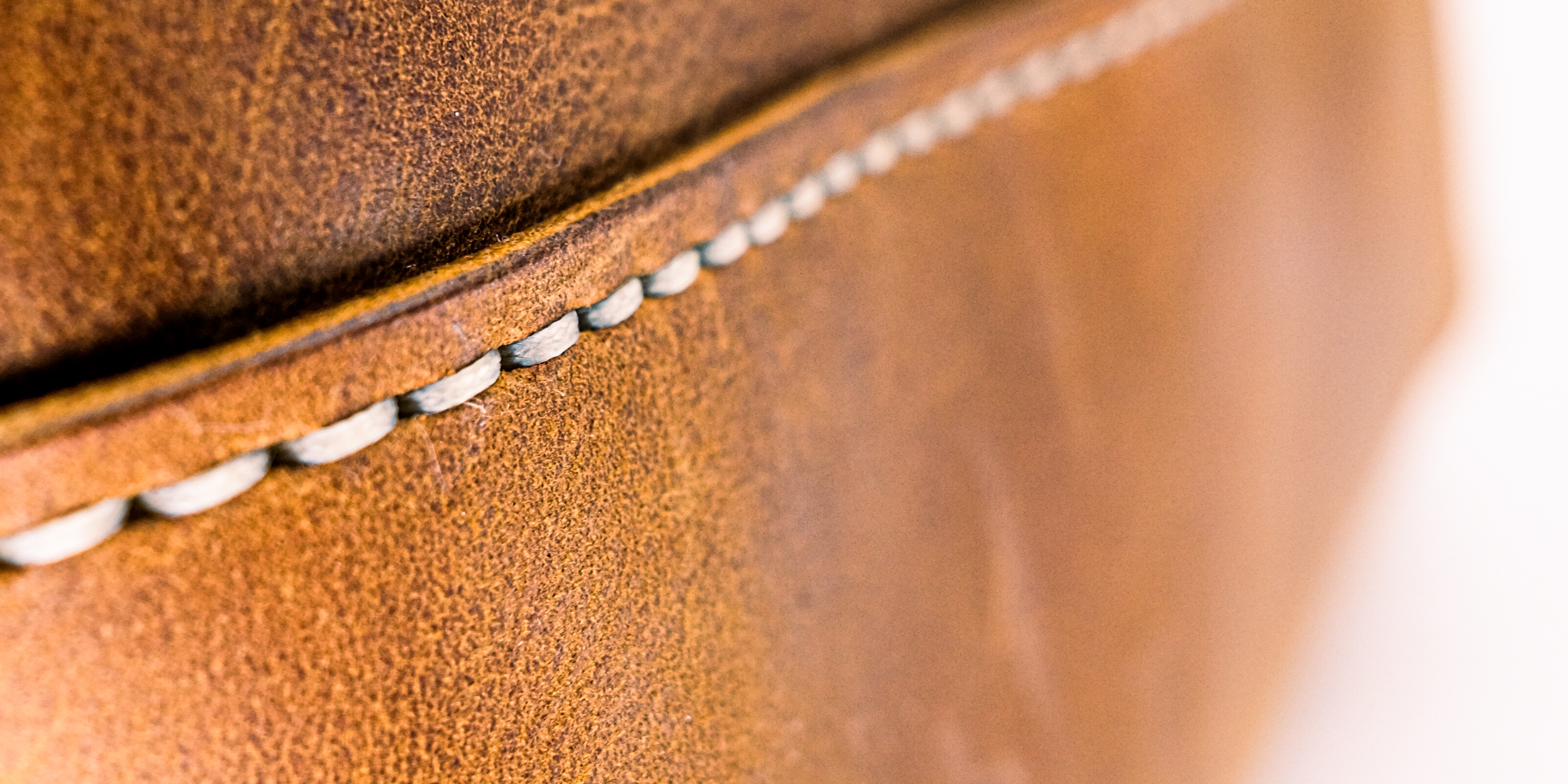
The Materials
Vegetable Tanned Leather
Vegetable tanning is a natural process that which uses the tannins in tree bark to transform an animal hide into leather. This process, that has been used for over 5000 years, takes months and is much more labor-intensive than it’s cheaper, faster counterpart, chrome-tanned leather. Only about 10% of leather is vegetable tanned. This is the primary kind of leather I use.
Along with being the most environmentally-friendly tanning process, vegetable-tanned leather is prized for its durability and strength. If properly cared for, it will outlast you and me. It’s also characterized by that universally-loved leather smell that you won’t find (naturally) in chrome-tanned leather.
Another unique trait of veg-tanned leather is its ability to develop a rich patina. The oils in the world around us, especially our skin, are absorbed by the leather, darkening it over time. Superficial nicks and scratches get filled in with natural waxes and oils in the leather to become beautiful characteristics, adding personality to every piece.
There’s a great sense of pride in owning goods made of vegetable-tanned leather that have developed over time and have become uniquely yours.
Shell Cordovan
The best leather that isn’t even technically leather. It’s a small piece of the horse hide that doesn’t have pores making it incredibly durable. The tanning process is centuries old and takes 6+ months. This stuff is ridiculous. And rare. And expensive. Sorry about that part but trust me, it’s worth it.
Combination Tanned
I also make products from leather that is “combination tanned”. One drawback of some vegetable tanned leathers is that they can have a fairly firm temper requiring a break-in period, whereas the chrome-tanning process softens the leather. Combination tanning seeks the best of both worlds. It starts with a quick chrome tan, followed by a heavy vegetable re-tan. This allows for all the benefits of vegetable tanning while reducing the break-in period. While I prefer fully veg-tanned leather, there are particular combination tanned leathers that I absolutely love and those are the ones you will find here.
The Buckle
The Rivets
I’ve always loved unpolished brass. I can’t fully explain why, but it made for an easy decision when it came time to choose the buckle I wanted to feature on my belts. After experimenting with a few different styles, I landed on what I think is the perfect one. It’s solid brass, has character without demanding too much attention, pairs with every leather color, and looks just as good with jeans as it does with dress pants.
I thought a lot about what kind of fasteners to use on the bags, belts and valet trays but after trying saddlers rivets, the answer was obvious. You don’t see them much because they require much more labor, each rivet needing to be secured with a hand press, trimmed with bold cutters, and hand-hammered to peen the jagged edges. It’s a lot more work but the added character of seeing every individual hammer mark makes it more than worth it.




